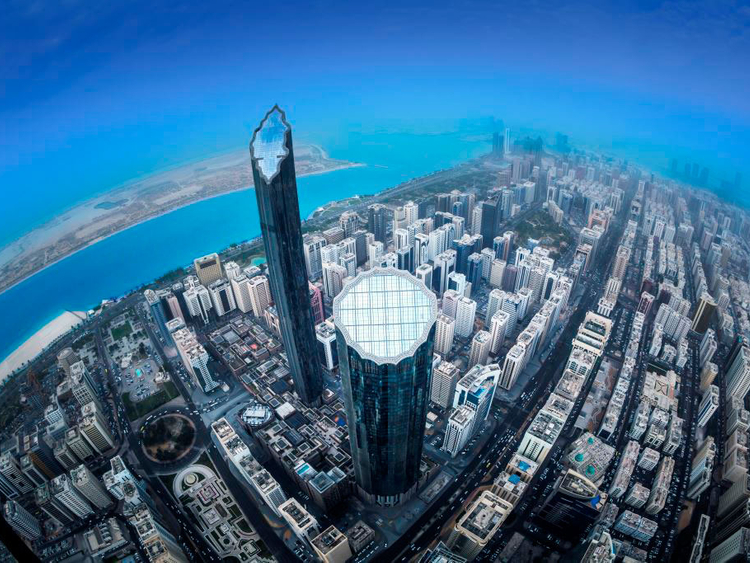Dubai: One of the UAE’s towering structures, the Burj Mohammed Bin Rashid at World Trade Centre Abu Dhabi, has been named one of the best buildings in the world.
The tallest tower in Abu Dhabi, which stands 383 metres and is now home to a little over 1,000 residents, has caught the attention of global building experts and earned the 2015 Best Tall Building Award for the Middle East and Africa region.
Experts at the Council on Tall Buildings and Urban Habitat (CTBUH), which initiated the awards, were impressed by the design of the Abu Dhabi tower, particularly its “smooth, sleek and reflective façade” that doesn’t require a lot of maintenance.
“The Burj adds a beautiful form to the Abu Dhabi skyline, which can be seen from quite a distance,” said Mun Summ Wong, the awards jury chair and founding director of WOHA Architects in Singapore.
“The building incorporates thoughtful design elements to increase its energy efficiency, such as the solar collectors and the ventilated three-skin façade. I also appreciate the traditional marketplace integrated with the base of the structure.”
The annual awards aims to recognise projects, as well as individuals, that contribute to the advancement of tall buildings and the urban development.
Abu Dhabi’s tallest tower, which was developed by Aldar Properties, has 474 units and more than 92 floors. Residents living in the tower have direct access to the World Trade Centre Mall, a major shopping destination in the UAE capital.
The tower has been picked from a pool of 123 entries from around the world. One winner has been declared for each of four competing regions.
The rest of the winners are One World Trade Centre in New York for the Americas region, CapitaGreen in Singapore for Asia and Australasia, and Bosco Verticale or ‘Vertical Forest’ in Milan for Europe.
An overall winner for the ‘Best Tall Building Worldwide’ will be chosen from the four regional winners and will be announced in November.
“This year’s winners and finalists are remarkable in that they show a strong commitment to sustainability, with some exemplifying dramatic progress in the use of greenery both to enhance the comfort of building’s users and reduce the environmental impact of the building,” the CTBUH said in a statement.
“Others show dramatic sculptural form and urban presence, and we are now starting to see the positive integration of buildings into their direct urban habitat, which has been a long-needed requirement.”












